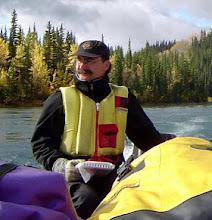From Shingu we moved to an onsen (hot spring spa) at Katsuura. The highlight is a hot spring in a cave overlooking the Pacific Ocean. Sitting in the steaming water we could feel the ocean spray as waves crashed upon the rugged coast immediately below us. Across the bay a high rugged cliff, pierced, had a tree artfully reaching into onshore winds. Japanese artists have a powerful muse in their landscape.
I returned at 5 am to watch the sunrise. It was dark, the sea was just noise, the rip of a wave breaking on rocks. The deep red band of the horizon interrupted by eight dark shapes, the craggy islands of the archipelago. Sitting to my shoulders in warm water, I watch the sky brighten through violet, pink and finally blue. On the sea the fleet of fishing boats is on the move. Finally the sun hits the cliff opposite and the sound of the waves diminishes in my consciousness as their sparkling droplets shine in the air before me.
Later we head back to the mainland and visit the commercial fish market. The fishing boats take turns emptying their catch, heeling over to ease the unloading. The floor of a large open warehouse is covered with tuna. Each one is weighed and registered. The tail is cut off, perhaps to let buyers, now apparently circulating, see the colour of the flesh. Boxes are loaded with fish, usually just one or two each, and packed with ice. The its off to the truck for delivery. Later we see the crews cleaning out their boats, repairing equipment and getting ready for tomorrow.
This week, at the UNESCO Committee on the International Trade in Endangered Species meetings in Doha, Monaco, with strong support from several other countries proposed strict new limits on the harvesting of tuna. These were defeated, much to the relief of Japan - especially in the fishing communities like Katsuura. However, there is recognition in Japan that there is a problem with tuna, catches are half of only a few years ago, and, if they are like Yukon River salmon, the fish are much smaller than they used to be. Hopefully we can curb our appetites to ensure these creatures are not lost forever.




